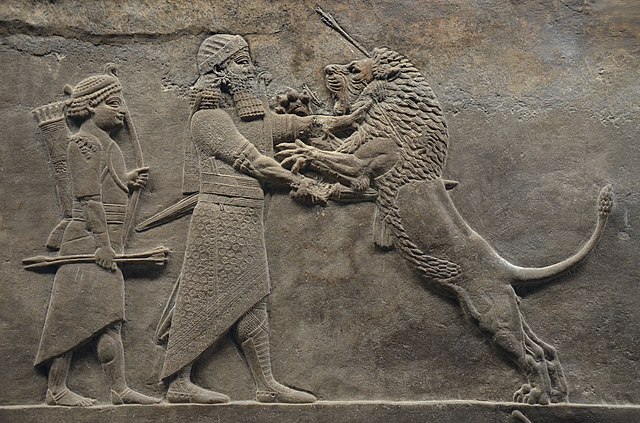Winged genie is the conventional term for a recurring motif in the iconography of Assyrian sculpture.
Winged genies are usually bearded male figures sporting birds' wings. The Genii are a reappearing trait in ancient Assyrian art, and are displayed most prominently in palaces or places of royalty. The two most notable places where the genies existed were Ashurnasirpal II’s palace Kalhu and Sargon II’s palace Dur-Sharrukin.
Winged genie, c. 870 BC, with inscription running across his midriff.
A four-winged genie in the Bucket and cone motif. Relief from the north wall of the Palace of king Sargon II at Dur Sharrukin, 713–716 BC.
Winged genie from the Nimrud palace of Ashurnasirpal II, now at the Museu Calouste Gulbenkian in Lisbon.
Pollinating winged genie, kept at the Yale University Art Gallery
Assyrian sculpture is the sculpture of the ancient Assyrian states, especially the Neo-Assyrian Empire of 911 to 612 BC, which was centered around the city of Assur in Mesopotamia which at its height, ruled over all of Mesopotamia, the Levant and Egypt, as well as portions of Anatolia, Arabia and modern-day Iran and Armenia. It forms a phase of the art of Mesopotamia, differing in particular because of its much greater use of stone and gypsum alabaster for large sculpture.
Assyrian sculpture
"Winged genie", Nimrud c. 870 BC, with inscription running across his midriff.
Part of the Lion Hunt of Ashurbanipal, c. 645–635 BC
Detail of genie figure, the palace of Ashurnasirpal II







